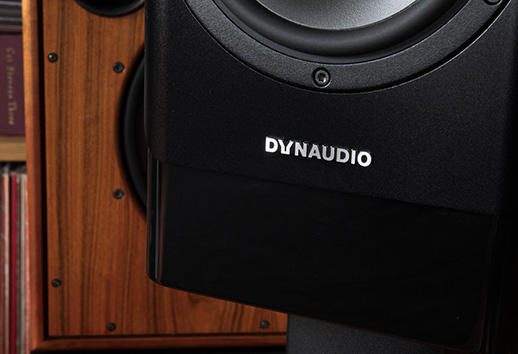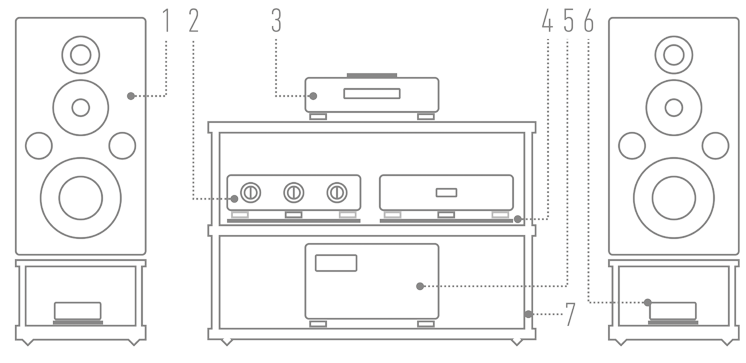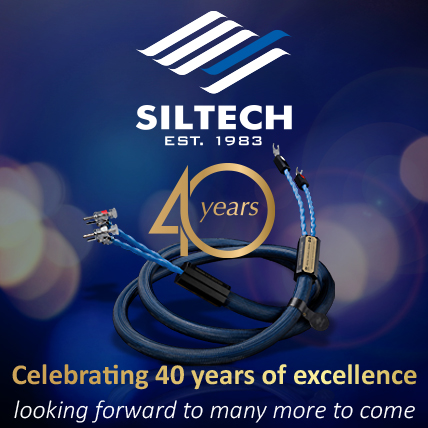|
LOUDSPEAKERS ⸜ stand-mounted DYNAUDIO
Manufacturer: DYNAUDIO A/S |

|
Review
text by WOJCIECH PACUŁA |

|
No 252 May 1, 2025 |
I HAVE ALREADY SHARED THIS IDEA WITH YOU - I initially thought that on the occasion of the test of the → HERITAGE SPECIAL ˻PL˺ or → CONTOUR LEGACY ˻PL˺ speakers, designs that seemed to me to be ideal carriers of this idea. Referring directly to the company's classic designs, looking as if they were lifelike drawn from the 1970s or 1980s, they seemed perfect to me as an example. 
And yet, no. When I dug deeper into the archives of “High Fidelity” and opened the test of the → CONFIDENCE 20, it turned out that already then, six years ago, I had similar observations. Let me explain: in 2016, the Harman International Industries conglomerate was bought by Samsung Electronics. In the context of this story, it's important to note that two years earlier there was another acquisition - for $41.5 million the Chinese company GoerTek, based in eastern Shandong, had bought Dynaudio. When I spoke to people in the industry at the time, whether manufacturers or journalists, at the Munich High End Show, most of them expressed concerns about the future of the brand. It seemed to us - yes, I counted myself among the skeptics as well - that this was the first step to massification of the brand, i.e., expansion of the range with low-cost and very low-priced products, such as Bluetooth speakers and headphones. And massification appeared to us as burying its audiophile heritage. Although, after all, there is nothing wrong with a re-branding of this type, or rather, a broadening of the target group. Recall that JBL, part of Harman, has been doing this for years with excellent results. Dynaudio, however, seemed to us to be a much more specialized manufacturer, more strongly connected to the “core” of the audiophile world, and thus prone to degradation in its core tasks. And these are related to the production of high-end loudspeakers. We were wrong, so wrong! ▌ Contour The CONTOUR SERIES IN THE NEW VERSION was first unveiled at the Munich High End Show 2016; more → HERE, two years after the deal. It was the culmination of many years of its development and a kind of reverence the company had for itself. As I said in my review of the first version of the stand-mount speakers → CONTOUR 20 ˻PL˺, the story of these speakers begins in the first half of the 1980s, when Dynaudio engineers decided to go for - as it was written at the time - the best possible drivers, use the best available components, and fit it all into a small stand-mounted cabinet. The first result of this work was the original Contour series, which included the '1', '2' and '4' models, produced between 1986 and 1991. In 1991, a successor to the Contour 1 was presented, the Contour 1.3 SE model, which remained in production, without any modifications, for the next 15 years. In 2002, a completely new, higher-end series called Confidence was unveiled, characterized by new formal solutions and unusual design. The drivers and crossover-related technologies developed at that time became the basis of the Contour S series, almost as long-lived, as it was sold from 2003 to 2014. 
In 2014, two special models were ready, → CONTOUR S 1.4 LE and Contour S 3.4 LE, which stayed with us until 2016. It was then, as we said, that a completely new, looking completely different, Contour series was introduced, with the “20” base model and the “30” and “60” floor-standing models; interestingly, however, the “50” model was missing from this series. In 2020 it underwent a revitalization, received revised drivers and crossovers. Since these changes were not significant enough to usher in a new series, only the letter “i” was added to the names of the individual models, that came from “improved” (Contour 20i, etc.). A change in linear progression thinking was the Contour Legacy model from last year, excellent in its vintage form and even better sound. Conceived as a limited-edition “interlude” between regular series that need not be calculated with as much care as other models, it benefited from many costly improvements. And I think it's its success that has resulted in the Contour 20 Black Edition loudspeakers, a sort of “racing” version of the basic model. ▌ Contour 20 Black Edition IN SPITE OF ALL THE CHANGES mentioned, the Contour 1 speakers, which is the entry-level model in the series dating back to 1986, and the Contour 20 Black Edition, which is the model shown at the → HIGH END SHOW 2024, in May 2024, and going on sale right now, are designs sharing exactly the same ideas. After all, we're talking about two-way stand-mounted speakers, with a bass-reflex cabinets and drivers developed in-house by Dynaudio. The appearance has changed, that's clear, as has the way the cabinet is built. The crossovers are also different, and the drivers themselves have come a really long way. But the premise, which says about the best possible mid-size stand-mounted speaker, has remained the same. | A few simple words… OTTO JØRGENSEN 
⸜ OTTO JØRGENSEN is a Product Training Manager at Dynaudio IN THE PAST, we always were quite successful with special edition products, where we created a unique variant, usually in only one finish variant, where we took an existing cabinet design and improved it with better drivers and crossovers. The Contour 20 was developed in 2016, and updated to Contour 20i in 2020. However, with the 20i we worked with the constraint of cost we wanted to keep the price the same. But in our R&D department we had this interesting prototype A variant of Contour 20i with no cost constraints, simply designed to pull as much performance as possible out of the curved MDF cabinet with aluminum front baffle. 
⸜ Black Edition suggests black finish, but you should know that Contour 20i are available also in different colors • photo by Dynaudio For this prototype, we used our best tweeter Esotar3 and a woofer with Neodymium magnet similar (though not identical) to what we do in Confidence. An improved, larger bass port, and a beautifully simple crossover with all-Mundorf components. This prototype was never really designed to be a finished product for the market, however we simply couldn't keep it down: It is simply too good to not show to the outside world. So, we created the Black Edition: An all-black speaker, with 100% of the performance of this mythical beast intact. Other than the Esotar3 tweeter, improved woofer and larger bass port, the main story of the Black Edition is the crossover. It is probably the simplest crossover we have ever created. Technically it is a 2nd order crossover, with no correction filters of any kind. In other words, one coil and one capacitor per driver, plus a resistor for the tweeter to align with the woofer sensitivity. This is actually three resistors in parallel, improving power handling as well as allowing us to tune to a value not available in one resistor. Here’s the interesting part: All Dynaudio speakers, including this one, always have all drivers connected in positive polarity. Conventional wisdom will tell you that for a 2nd order crossover to work, the tweeter must be inverted but we don’t do that. Instead we use a so-called low-Q crossover (so, not Butterworth or Linkwitz-Riley), where the roll-off starts as first order, then gradually becomes higher order. Combined with the inherent response of the drivers, this creates a simple crossover with good phase response, flat on-axis frequency response, and good off-axis behavior. This is possible through using Jupiter measurements and many iterations, to optimize the actual acoustic output, rather than sticking to traditional theories. The result is a very good loudspeaker, at a price that sit between the Contour 20i and the reference Confidence 20. OJ HERE’S WHAT DYNAUDIO SAYS about their latest speakers:
It is apparent that the company itself, including its promotion department, considers these speakers as a unique product. On the one hand, filling the gap between the Contour and Confidence series (this is a mercantile reason), but also to build the company's image (this in turn is a dignity reason). DRIVERS • Dynaudio's greatest pride has always been its own drivers. The treble is reproduced by the latest version of the Esotar 3 model. It's been a long time since its first version with this digit, and while the symbol hasn't changed, minor improvements have been introduced numerous times. It features a silk dome with a diameter of ø 28 mm coated in an ultra-precise process that the company calls DSR, hiding the witty name Dynaudio Secret Recipe under that acronym. This improves its power handling strength, so it freely processes sound as low as 1000 Hz. Behind the diaphragm, an element called Hexis was placed. Its purpose is to help better dissipate pressure from the back side of the diaphragm. And its rear side was enclosed in a large chamber to reduce self-resonance. Damping has been improved in this version, leaving the strong neodymium magnet and lightweight aluminum voice coil. These changes translated into higher sensitivity of the driver, so that, as the manufacturer assures, “it can respond with a lower input voltage, so it doesn't heat up as quickly.” The driver is bolted to a sizable aluminum plate that is part of the front bracing. The midrange and woofers are also characteristic only of this manufacturer. Their diaphragm is made from doped polymer and bears the company name MSP (magnesium silicate polymer). It's a variety of plastic, and it used to be these drivers that gave Dynaudio speakers their distinctive sound. Things have been different for a while now, they are much more “transparent”. The speakers tested used one such driver, a NeoTec MSP woofer with a diameter of ø 180 mm. Its diaphragm is made from a single piece, without cutting out the center for the dust cap. It is connected directly to the magnet via narrow ribs; the voice coil carcass is made of fiberglass to reduce eddy currents (and improve speed, the manufacturer adds. The Black Edition uses a neodymium magnet, instead of the ferrite magnet developed for the Contour 20 version. Since the magnet is smaller here, there is more room for air movement in the enclosure, according to company materials. And further:
The woofer is loaded with a bass-reflex port located on the rear panel. The Contour 20 Black Edition received a new port, larger than that of the Contour 20i. It is expanded in a specific way at both ends (inside and outside) to help control air movement, providing “better precision, less artifacts and much better bass quality.” CABINET • The cabinet is identical to the one we know from the “20” and “20i” models. It has a slightly converging towards the back shape and flat front and rear walls. The former is reinforced with a metal element - it's a complex, thick aluminum casting, the drivers are bolted to. Its sides are rounded, which helps reduce distortion. 
The cabinet is made of MDF boards and is reinforced inside with two horizontal elements. One of them completely separates the lower part of the cabinet, and the other stiffens it at a height below the tweeter. On the sides you can see punched MDF elements glued in several places. What distinguishes it from other versions, of course, is the color. It's a very thick layer of varnish that looks like piano lacquer. CROSSOVER • The Contour 20 Black Edition features an all-new crossover using the smallest number of components the engineers could use, we read. It is it that seems to be one of the most important changes in these speakers. It uses Mundorf capacitors and resistors, a very large air coil and really good cables. They use 2nd order filters in the crossover for both drivers, so there is no need for equalization circuits. ▌ SOUND HOW WE LISTENED • The Dynaudio Contour 20 Black Edition speakers stood in a semi-near field, a little closer than usual. The idea was for them to be as far away from the rear wall as possible. This means that they stood 240 cm from the listening position and 240 cm from each other (counting from the center of the front wall). They were 85 cm from the wall behind them, counting from the center of their back wall. During the test, the speakers were toed-in so that the axes of the drivers crossed in front of my head. 
I determined the distance between the speakers and their leveling using a Bosch PLR 50 C. For more on positioning the speakers, see the article FINE-TUNNING, or how to set up speakers, HIGH FIDELITY № 177, January 1, 2019, → HIGHFIDELITY.pl, accessed May 10, 2022. For more on HF listening room acoustics, see the article Room acoustics and how it works according to Mariusz Zielmachowicz, HIGH FIDELITY № 189, January 1, 2020, → HIGHFIDELITY.pl, accessed 12.07.2022. |
In the test, they were driven by the Soulution 710 power amplifier, and the signal was sent through Siltech Triple Crown speaker cables. The reference was Harbeth M40.1 speakers, and the music was played through an Ayon Audio CD-35 HF SACD player and a LUMIN T3 file player. 
» RECORDINGS USED FOR THE TEST ⸜a selection
⸜ THE BEATLES, Let It Be, Apple Records /Universal Music Group International UICY-16030/1, 2 x SHM-CD ⸜ 1970/2021. I SHOULD NOT DO THIS, because I'm spoiling the punchline of the test, but I think it's important to put the right perspective on the tested speakers from the start. These are definitely better speakers than the Contour 20, but that was to be expected. What I didn't expect was the scale of these changes. And now the punch line, which became the introduction: if the BBC designers today had planned to build listening monitors to replace the LS3/5a, if they wanted to keep all their advantages, like flawless vocal delivery and deep insight into the recording, they would have developed speakers such as the Black Edition. 
It may not be very consistent with good parenting to speak for others, but that's exactly what I did. For the impression of witnessing an excellent product whose sound is so close to what I get every day with Harbeth M40.1 speakers was almost overpowering. As soon as the first opening notes rang out ˻ 12 ˺ Get Back from THE BEATLES album Let It Be, in the 2021 remix, when they sounded the guitar in the right channel, and a Fender Rhodes electric piano in the left channel, when everything suddenly began to come together, it sounded so natural, so dense, so fantastically spacious that my hands started clapping without me even knowing I was doing it. This is because the tested speakers offer extremely deep color, slightly favoring the midrange, but also perfectly defining its extremes. To tell the truth, in the bass they extend - or at least give up such an impression - like a large part of medium-sized floor-standing speakers. And it's not even about sound pressure, when Lars Danielsson's double bass or the guitars from the New Dawn album are playing, but about its scale. That's much harder to achieve, as it requires excellent bandwidth coherence, high dynamics and realistically low bass. And the scale of sound with these speakers is excellent. Because not only were Lennon and McCartney's vocals big, but so were the strings in ˻ 3 ˺ Across the Universe. It was a unique experience. The sound was saturated, had momentum, and the stereoscopic stage stretched in three dimensions, signaling vertical displacement as well - an effect familiar in audio, but rarely reproduced. The width of the panorama was exceptional, not least because it was so dense, so compressible. These are speakers that do two things at the same time, things that are most often separate. These, we should add, are the things that make designs from the BBC “school” so highly regarded. For on the one hand there is saturation. With the Beatles' album, this struck me particularly, although the remix by Giles Martin goes precisely in this direction. But it came out even more strongly with THE OSCAR PETERSON TRIO's We Get Request album. Its “24 Gold Direct-from-Master Edition UDM” version is even more “emphasized” in this respect than the others, which the Dynaudio showed with ease. But this particular version, similar to the STAN GETZ/JOAO GILBERTO Getz/Gilberto album, is also remarkably resolving and has perfectly defined sound sources. The combination of saturation, the almost silky texture of the events before me, with excellent sound definition is something all sound engineers in recording and mastering studios should hear. This is not a warm sound, and I don't hear any deviation from an equalized frequency response. And yet there is an inner warmth in this playing, something in the “center” of the sound that radiates outward and that makes it such natural performance. At the same time, the insight into the recording, as I say, is outstanding. And it's not even that we can easily distinguish the level of noise from older recordings, but that we subconsciously feel it's something separate from the music. Like in ˻ 3 ˺ My One And Only Love, from Peterson's album, a quiet, lyrical ballad that begins with the leader's quiet piano. You can hear a strong noise there, which was not cut out during the remastering. The Dynaudio showed that excessive interference with this element is not necessary, and not even good. Here and now the presentation was exceptionally coherent internally, also on a technical level, being both a musical work and a document of the times when it was created. 
It came out nicely with an album that Damian Lipinski burned for me a few years ago. At the time, he was preparing a remaster of the first two albums of the band called BAJM and had the “master” tapes in his hands (the release, unfortunately, did not happen). The disc I'm talking about, a copy of Bajm, band's debut album, and it is a so-called “flat transfer,” that is, a rip from tape without any correction. And it's clear that the bandwidth here is a bit limited, and the midrange is less boosted than it should be. But overall - a firecracker. But just with the Dynaudio, the noise accompanying the recordings, quite strong, did not interfere. I heard it as part of the whole, organically even combined with the sound of the instruments. | Stands STAND-MOUNT SPEAKERS, by definition, require stands, that allow tweeter to be positioned at the height at which the designs were measured and at which they have the best equalized frequency response. At the same time, this is not the only place where they can be placed. In Anglo-Saxon terminology, stand-mount speakers are also called bookshelf speakers, or “speakers designed to be placed on a shelf (for books).” And so you can placed them like that - feel free to listen to music in whatever way you wish. However, if you want to bring out the speakers to their full potential, good quality stands are essential. Which is what the manufacturers themselves are trying to remedy, offering stands that match speakers in aesthetics, and are often their mechanical extension. The best of them should be treated as an integral (necessary) part of the mechanical design of the speakers. Dynaudio also offers its stands. The model designed for the Confidence 20 speakers is called Stand 20. 
The design is rather simple, but thoughtful. They are made entirely of aluminum, are 599 mm high and weigh 4.6 kg (each). This is not much, but the company has provided for the possibility of adding weight to them. The element connecting the lower and upper platforms is a rather large profile and it allows user to insert, prepared by the manufacturer, bags filled with either sand or - as in the case of the Polish distributor - quartz. What's more, an aluminum adapter can be screwed to the upper platform, and the speakers themselves can be screwed to it, having threaded sockets in their bottom. The stands feature high, screw-in spikes one installs from the top, so you can adjust the speakers to the height of your listening position or, if you want, tilt them back at an angle of up to 10⁰. And we can place, as I usually do, anti-vibration platforms and pads under the spikes. It is in this way that you can build something that the Polish Dynaudio distributor offers. In my case, it's a system consisting of an Acoustic Revive RST-38H platform, SPU-8 pads and - under the pads - RIQ-5010 quartz pads. 
The Polish distributor for the latter has made a steel collar to prevent them from moving, and instead of regular AR platforms it makes its own, of a different shape, but with the „blessing” of Acoustic Revive, which supplies the quartz for them. The pads, along with the adapters for the SPU-8, come in Poland in nice wooden boxes with the Acoustic Revive logo, also endorsed by the Japanese company. Switching from the basic version of the stands to the tweaked or “boosted” version with additives changes the sound in an exceptionally clear, almost spectacular way. The presentation becomes clearer, more resolved and selective. One also has the impression of the sound being louder, by some 1 dB. And this is because the whole thing comes forward and is much more active and tangible. The perception of events also changes. Whereas before they seemed slightly warmed up, now the fill remains, but the blur of the leading edge disappears. Therefore, if the system was tuned for sound with the basic version of the Stand 20, you will need to rethink add-ons like cables, power supply, etc. “Full-size” stands produce clearer and more pronounced sound, simply better, so if you were previously looking for just that through other components, now you may have to go in the opposite direction. Be that as it may, listening to the Contour 20 Black Edition speakers on ordinary stands means wasting some of their potential. ● ALL THAT I'VE WRITTEN ABOUT makes listening to the Dynaudio Confidence 20 Black Edition an amazingly calm and easy experience and gets you in the mood for “more”. Please don't misunderstand me, these are very, very dynamic speakers. But also the attack of sound is natural, not exaggerated. That's why its leading edge has mass, it's not a dry thump, a thin outline of contours, like in a comic book. And this makes us not get tired during listening, not stressed by anything, calm. Perhaps that's one of the reasons why these are speakers that play any kind of music in an equally engaged and “gutsy” way. Indeed, listening to ENYA immediately after Bajm, from her debut album, released - note! - by BBC Entertainment, she sounded in a three-dimensional, saturated way. Sounds were formed as large clusters of energy filled with smaller ones. And it’s not just about the ˻ 12 ˺ Boadicea, which I listen to most often, but also other tracks, including, for example, ˻ 9 ˺ Epona, which opens with a low, strong sound, in a moment boosted by even stronger bass. My impression is that the changes in the drivers, but especially the new crossover, yielded something I had heard literally a few days earlier when I tested the latest version of Harbeth speakers, the M40.5 XD2 model. That was the first time that the depth of sound and its internal warmth was almost equivalent to what I got in the M40.1. This was achieved, even though the frequency response was even (no “BBC dip”), only with better midrange driver material and better elements in the crossover. Here I hear a similar progression, resulting directly from more advanced technology and better measurement techniques. ▌ Summary IT IS NOT LIKE THAT that only what used to be in the past is good and what comes out now sucks. It's true that top examples of audio products from the early decades of the 20th century still inspire amazement today. But these are absolutely rare cases, and 99.9% of productions from that era are just curiosities today, not even competing with good modern designs. But it is also the case that the ethos of sound, if you will, cultivated then, is still relevant today. It is, in my opinion, this “right” direction to look at audio recordings. 
In the Confidence 20 Black Edition I hear a combination of these two elements: “vintage” leaning toward saturation and celebration of the midrange, and contemporary resolution and band's extension. Absolutely contemporary is also the way of forming a powerful space. Not inflated, but naturally large, to some extent exceeding the limitations of the room we are in by erasing it from our consciousness for a while. So when we sit comfortably with the cover (box, tablet screen) in hand and play an album, we can expect the tested speakers to bring out the best from it. They are very clear, and immediately showed that there is no lowest end on the KENNY DREW TRIO’S Dark Beauty album, recorded in May 1971 in Copenhagen. But also that it is perfectly coherent, dense and dynamic, as highlighted by its release on SACD in Japan. And I could really go on for about these speakers for a long time. And there is no point, because everything that was supposed to be said has already been said. These are some of the best stand-mounted speakers from this company, maybe ever, at least that’s what I think. And some of the best speakers of this size in general. ● ▌ Technical specifications (acc. to the manufacturer)
Sensitivity: 86 dB (2.83 V/1 m) 
THIS TEST HAS BEEN DESIGNED ACCORDING TO THE GUIDELINES adopted by the Association of International Audiophile Publications, an international audio press association concerned with ethical and professional standards in our industry, of which HIGH FIDELITY is a founding member. More about the association and its constituent titles → HERE. |

|
Reference system 2025 |
|
 1) Loudspeakers: HARBETH M40.1 |REVIEW| 2) Line preamplifier: AYON AUDIO Spheris III Linestage |REVIEW| 3) Super Audio CD Player: AYON AUDIO CD-35 HF Edition No. 01/50 |REVIEW| 4) Stands (loudspeakers): ACOUSTIC REVIVE (custom) |ABOUT| 5) Power amplifier: SOULUTION 710 6) Loudspeaker filter: SPEC REAL-SOUND PROCESSOR RSP-AZ9EX (prototype) |REVIEW| 7) Hi-Fi rack: Hi-Fi rack: finite elemente MASTER REFERENCE PAGODE EDITION Mk II, more → HERE |
|

|
Cables Analog interconnect SACD Player - Line preamplifier: SILTECH Triple Crown (1 m) |ABOUT|» ANALOG INTERCONNECT Line preamplifier → Power amplifier: Siltech ROYAL SINLGE CROWN RCA; review → HERE Speaker cable: SILTECH Triple Crown (2.5 m) |ABOUT| |

|
AC Power Power cable | Mains Power Distribution Block - SACD Player: SILTECH Triple CrownPower (2 m) |ARTICLE| » POWER CABLE Mains Power Distribution Block → Line preamplifier: Acoustic Revive ABSOLUTE-POWER CORD, review → HERE » POWER CABLE Mains Power Distribution Block → Power amplifier: Acoustic Revive ABSOLUTE-POWER CORD, review → HERE Power cable | Power Receptacle - Mains Power Distribution Block: ACROLINK Mexcel 7N-PC9500 (2 m) |ARTICLE| Power Receptacle: Acoustic Revive RTP-4eu ULTIMATE |REVIEW| » ANTI-VIBRATION PLATFORM under Acoustic Revive RTP-4eu ULTIMATE: Graphite Audio CLASSIC 100 ULTRA, review → HERE Power Supply Conditioner: Acoustic Revive RPC-1 |REVIEW| Power Supply Conditioner: Acoustic Revive RAS-14 Triple-C |REVIEW| Passive filter EMI/RFI: VERICTUM Block |REVIEW| |

|
Anti-vibration Speaker stands: ACOUSTIC REVIVE (custom)Hi-Fi rack: finite elemente MASTER REFERENCE PAGODE EDITION Mk II, more → HERE Anti-vibration platforms: ACOUSTIC REVIVE RAF-48H |ARTICLE| » ANTI-VIBRATIONAL FEET: |

|
Analogue Phono preamplifier: Phono cartridges:
Clamp: PATHE WINGS Titanium PW-Ti 770 | Limited Edition Record mats:
|

|
Headphones » HEADPHONE AMPLIFIER: Leben CS-600X, review → HEREHeadphones: Headphone Cables: Forza AudioWorks NOIR HYBRID HPC |
main page | archive | contact | kts
© 2009 HighFidelity, design by PikselStudio,
projektowanie stron www: Indecity


















